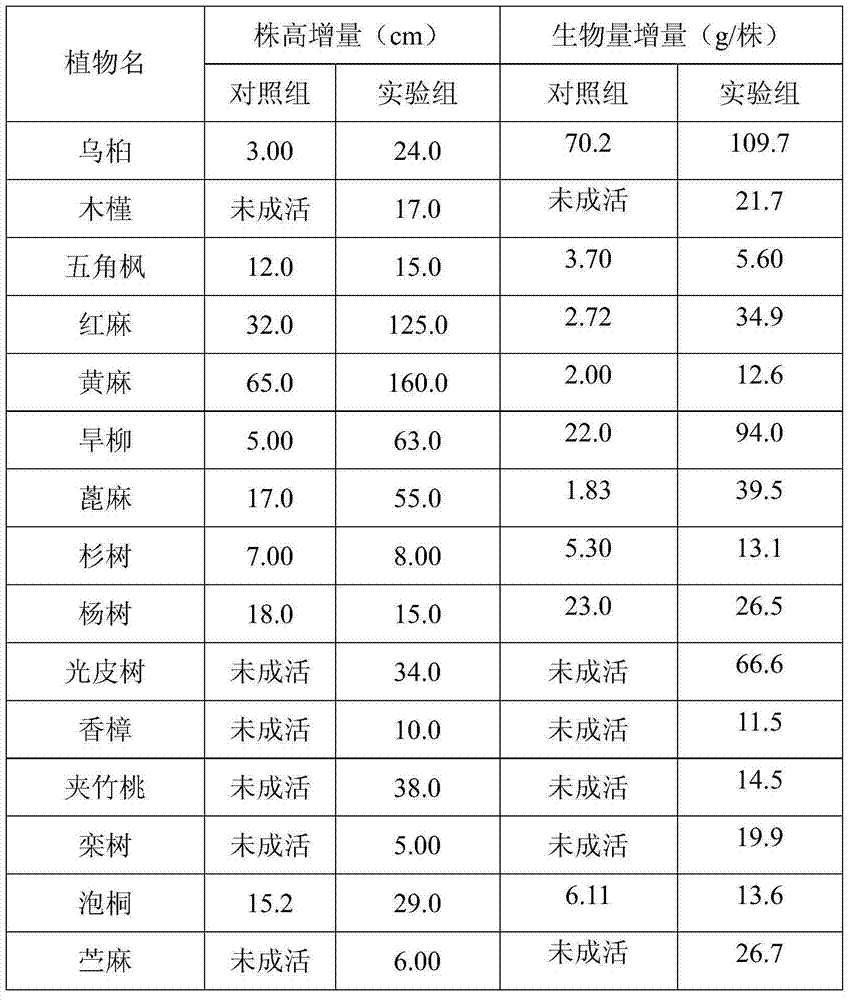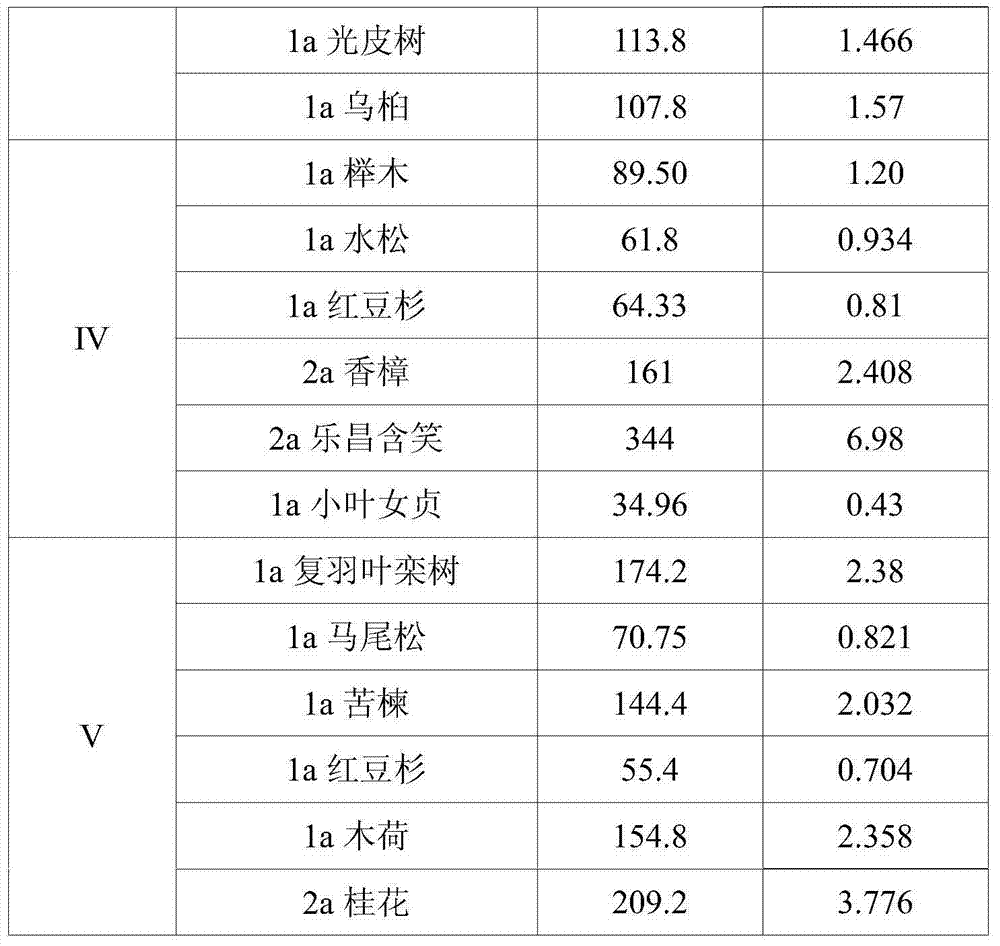Organic bacterial manure for lead zinc ore contaminated soil remediation and preparation method of organic bacterial manure
A technology of polluting soil and organic bacteria, applied in the direction of organic fertilizers, inorganic fertilizers, fertilizers made of biological waste, etc., to achieve good lead and zinc resistance, improve biodiversity and microbial numbers, and alleviate the effects of stress.
- Summary
- Abstract
- Description
- Claims
- Application Information
AI Technical Summary
Problems solved by technology
Method used
Image
Examples
Embodiment 1
[0029] A kind of organic bacterial fertilizer of the present invention is used for the remediation of lead-zinc ore polluted soil, after measuring the degree of soil pollution in the embodiment, the determined organic bacterial fertilizer composition is to comprise 1 mass part of basic nutrient solution, 25 mass parts of mitigation The water-retaining medium of 74 mass parts (the water-retaining medium adopted in this embodiment is peat soil) and the anti-lead-zinc composite microbial bacterial agent of 5 mass parts.
[0030] The preparation method of the organic bacterial manure that is used for the remediation of lead-zinc mine polluted soil in aforementioned embodiment 1 specifically comprises the following steps:
[0031] (1) Prepare basic nutrient solution: mix calcium superphosphate, potassium sulfate, sodium hydroxide, disodium hydrogen phosphate and sodium dihydrogen phosphate to obtain basic nutrient solution; in basic nutrient solution, calcium superphosphate, potassi...
Embodiment 2
[0045] An application of the organic bacterial fertilizer used for the remediation of lead-zinc mine contaminated soil in Example 1 in the remediation of lead-zinc mine contaminated soil, using slag collected from a lead-zinc tailings pond in Hunan as a substrate to carry out a pot test.
[0046] Experimental group: the organic bacterial fertilizer of Example 1 and the slag from the lead-zinc tailings pond were uniformly mixed according to the mass ratio of 1:4 and filled into pots. A total of 8 pots of parallel samples were set up.
[0047] Control group: Add N, P, and K chemical fertilizers in the same amount as the organic bacterial fertilizer in Example 1 to the slag of lead-zinc tailings, and put them in pots. A total of 8 pots of parallel samples were set up.
[0048] Three selected plant seedlings were transplanted into each pot. After one year of planting, the changes in the increase in plant height and biomass of the test plants were investigated, and the results of...
Embodiment 3
[0052] Example 3: The organic bacterial fertilizer used in Example 1 for remediation of lead-zinc ore contaminated soil was used in the ecological restoration project of the lead-zinc tailings polluted area.
[0053] In the lead-zinc tailings reservoir area in Zixing, Hunan Province, plant communities I, II, III, IV, and V have been configured, and a 1hm2 ecological restoration demonstration project has been established for each plant community.
[0054] In the early stage of restoration, the slag samples in the project area were measured and analyzed, the nutrient level of the slag land, the types of polluted elements and their pollution degree, and the contents of Pb and Zn elements in the soil in the 0-50cm section were 2684.2mg / Kg and 3433.8mg / Kg respectively, far Higher than the background value of Hunan Province and China.
[0055] Experimental area: the afforestation method is to dig a hole 0.5m * 0.5m * 0.5m, and then add the organic bacterial fertilizer for repairing ...
PUM
 Login to View More
Login to View More Abstract
Description
Claims
Application Information
 Login to View More
Login to View More - R&D
- Intellectual Property
- Life Sciences
- Materials
- Tech Scout
- Unparalleled Data Quality
- Higher Quality Content
- 60% Fewer Hallucinations
Browse by: Latest US Patents, China's latest patents, Technical Efficacy Thesaurus, Application Domain, Technology Topic, Popular Technical Reports.
© 2025 PatSnap. All rights reserved.Legal|Privacy policy|Modern Slavery Act Transparency Statement|Sitemap|About US| Contact US: help@patsnap.com



